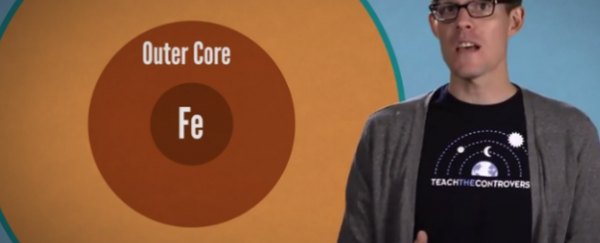We're basically living on an onion made from magma. What does that even mean? Joe Hansen from It's Okay To Be Smart explains.
Even with the most incredible technology at our finger tips, we've only been able to drill our way into 0.2 percent of the Earth's radius, which isn't very helpful if you want to know what it's made of all the way to the core. But it just so happens that our planet has a tendency to burp up some of its hot, molten insides on occasion, so we actually have a pretty good idea of what's going on down there in the outer core.
Earth is organised into many different kinds of layers, including a silicate solid outer crust, a highly viscous mantle, a liquid magma outer core, and a solid inner core. But it wasn't always like this. In the very, very early days of Earth, it was a solid, messy mixture of rocks and minerals. A series of violent explosions combined with powerful doses of radiation and the pressure of gravitational forces caused these rocks and minerals to melt, and they ended up organising themselves according to relative density.
The heaviest materials, such as iron and nickel, worked their way to the core, while lighter materials like aluminium and silicon stayed near the surface. Slowly but surely, the wonderfully layered giant onion that we now call home was formed.
Find out more about how Earth turned out the way it has, and why Saturn could float in a (really big) swimming pool, by watching the latest episode of It's Okay To Be Smart above.
Source: It's Okay To Be Smart
